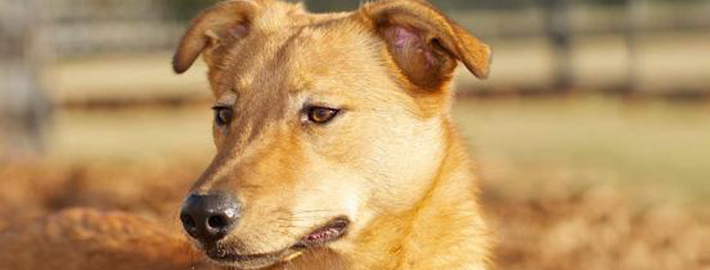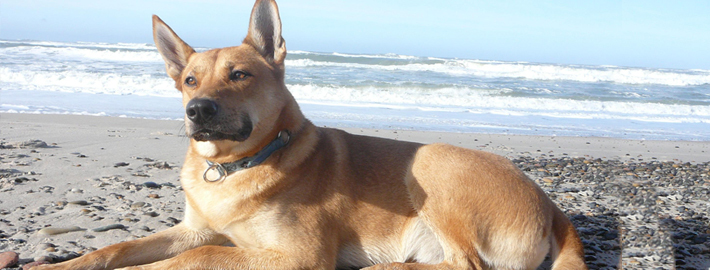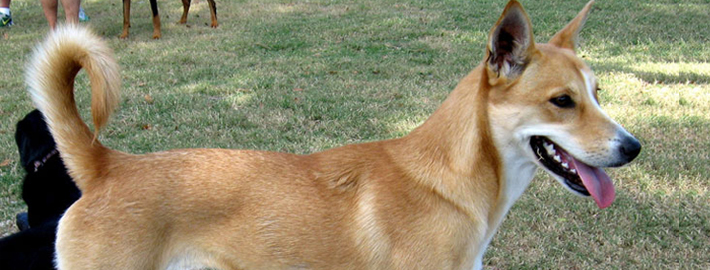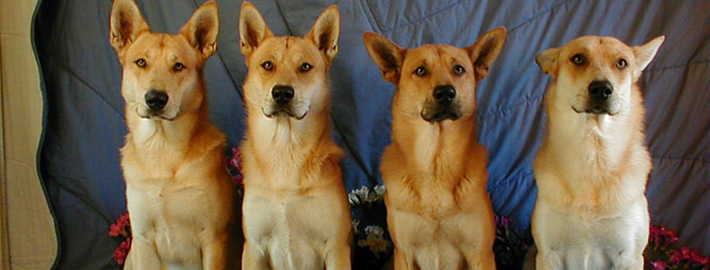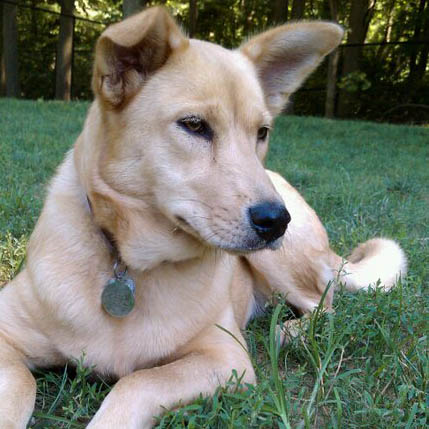What makes the Carolina Dog Unique?
Carolina Dogs can be registered with the American Rare Breed Association and the United Kennel Club. ARBA includes the breed in its “Spitz and Primitive Group”, which includes primitives such as the dingo and Canaan Dog.
Breed Groups
Page Contents
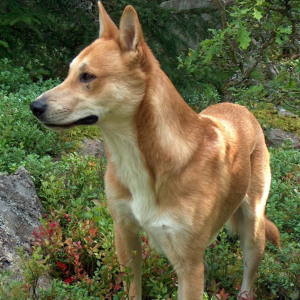
SnapShot
| Size: | Males –45 to 61 cm cm (17 to 24 inches) Females – 45 to 61 cm cm (17 to 24 inches) |
| Weight: | Males – 15 to 20 kg (30 to 65 lb) Females – 15 to 20 kg (30 to 65 lb) |
| Origin: | United States of America |
| Life Span: | 12 – 14 Years |
| Colour: | Red Ginger, Yellow, Beige, Red Sable, Tan, Orange |
| Litter Size: | 1 to 8 puppies |
Is the Carolina Dog Right For You?
The Carolina Dog is a medium sized dog that normally runs between 30 and 50 pounds and about 18 inches tall when full grown.
Carolina Dogs are natural runners. They have excellent noses that help them hunt wild animals, when in the wild. When kept as pets, the breed requires moderate exercise and sufficient space. They need to be exposed to a lot of social activity from a young age. Once they are trained enough, they are said to make excellent family dogs.
The Carolina Dog is not recommended for apartment life. They do best with plenty of space around them. They are still not fully domesticated. They can live outdoors provided it is not too cold. They adapt well to hot, sunny climates.
In 5 Words
- Reserved
- Adaptable
- Loyal
- Gentle
- Primitive
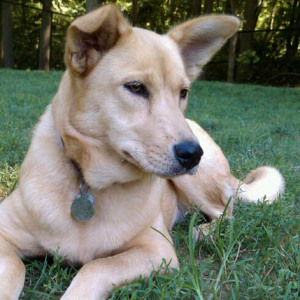
Characteristics
Learn About the Carolina Dog
Description
The Carolina Dogs have muscular, medium-sized frames covered in short coats that come in tan, black & tan and off-white. They have wedge-shaped heads with pointed ears, long muzzles and dark, almond-shaped eyes. Their strong necks lead to narrow chests, straight backs and thick tails that either hang low or curl in a hook. Overall, Carolina Dogs have a ruggedly handsome look.The Carolina Dog has a well-developed chest and a medium-length, straight back. Their belly is tucked up and their neck is long. They have almond-shaped eyes that are dark in color and a pair of large, high-set ears that stand erect. Their head is wedge-shaped and their jaws are strong and powerful. They have a distinctive tail that exists in the shape of a fish hook. The tail is carried in various positions depending on the dog’s mood. The short-haired coat of the Carolina Dog is very thick, and a dense undercoat forms during season. Hair is longer on the neck, withers, and back. The coat is usually a deep red ginger in color, and pale buff markings often exist on the shoulders and side of the muzzle. Other coat colors for this breed include white (with spots), tan, beige, desert sand, yellow, orange, ginger red, and red sable.
Short History of the Carolina Dog
Unlike some breeds whose origins are shrouded in mystery, the Border Collie is known to have begun its history in the Scottish and English borderlands shortly after the Roman occupation. This breed was responsible for herding sheep and sometimes livestock in this mountainous region. Today, a number of Border Collies still work on ranches and farms.
These dogs were an especial favorite of Queen Victoria, who had become familiar with the breed on her annual trips to Scotland. In 1876, the first sheepdog trials took place. The breed that eventually became the modern Border Collie proved themselves able to successfully herd and capture 100 wild Welsh sheep. The working lines for this breed are still among the world’s best herding dogs.
The Border Collie breed split around 1995 when they were admitted into the American Kennel Club (AKC). There currently are both working and show lines of this breed, so be potential owners should be sure to choose a dog from the lineage that is appropriate to their own purposes.
Temperament
The Carolina dog is a loyal, pack oriented dog. It is devoted and affectionate with its family but wary with strangers. It is protective but will not bite unprovoked. Without socialization, it is often shy. It rarely roams.. They make gentle pets, yet they are reserved with strangers. It is an active dog that will require exercise.This dog breed does best with older children and tend to be somewhat intolerant of children that they do not know. Carolina Dogs typically get along well with other dogs, cats and other pets.
Caring for Your Carolina Dog
Grooming & Bathing
Occasional brushing with a firm bristle brush is recommended for the Carolina Dog breed. Caring for a Plott’s coat is easy. Groom it at least weekly with a rubber curry brush to remove dead hair and distribute skin oils. If your Plott spends a lot of time indoors, you might want to brush him more often to keep dead hair on the brush and off your furniture and clothing. Plotts with a double coat will shed more heavily and need to be brushed two or three times a week.
Exercise & Training
The Carolina Dog should be taken for a daily, long walk. While on the walk it is very important that the dog is made to heel beside or behind the human while on a leash, as in the dog’s mind, the leader leads the way.

